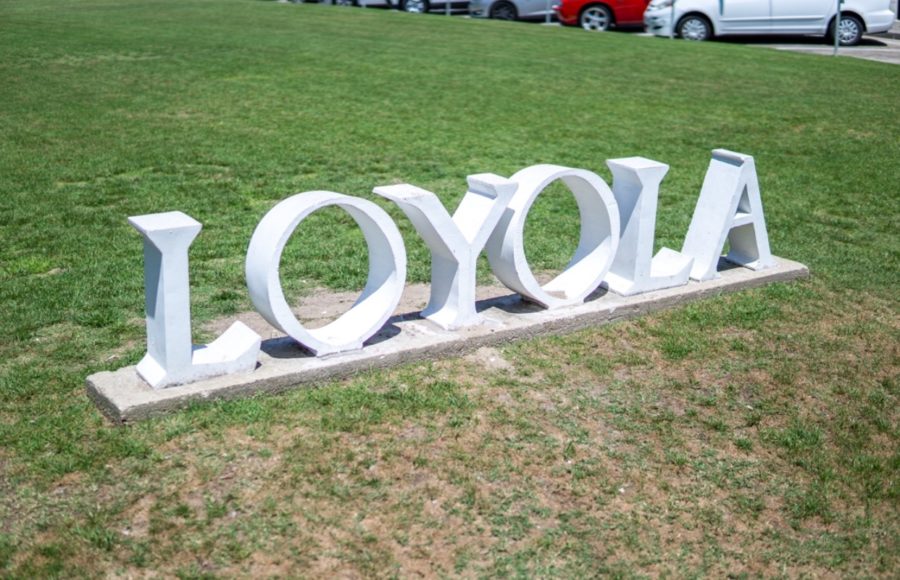Recently unearthed from my mother’s attic was a framed Maroon article. It was an interview conducted shortly after I was elected SGA president in 1999. I read with amusement and some resignation about my responses to two large Loyola controversies: high tuition rates and low retention.
I am disappointed that 14 years later, these issues are still controversial. And I am saddened that the budget shortfalls created by these issues have led to front page images of longtime employees standing in line to get buyout packages in Mercy Hall. It was not exactly a vision of social justice in action.
In 1999 there was a large debate as to whether or not to raise tuition to $18,700 for undergrads and to cap potential raises at 2 percent over the rate of inflation. How quaint. Loyola’s tuition today-excluding room and board-is a staggering $35,504. So base tuition has doubled in 13 years and we have blown past any indexing tied to inflation.
Tuition rate was never a problem as long as there was a line at the door to get in. 990 students were projected to enroll August 2005 when Hurricane Katrina closed the campus for a semester. After the very understandable and expected low enrollment in ’06 and ’07, the full time enrolled number (FTE) went to 695 in 2008. The FTE number jumped back up to 927 in 2010, before we hit the iceberg of 627 students in 2013.
The drop in enrollment has been blamed on a slight lowering of the “discount rate”-scholarship level-that went horribly wrong. While that certainly played a role, there are several other factors at work-all of which have been boiling for several years.
My belief is that Loyola, as an insinuation, got a bit too enamored with sweet low-discount out of state tuitions and as a result de-emphasized New Orleans as a feeder into the university. Do you know the number of Jesuit New Orleans High School students enrolled in the current freshman class? Try zero. Do you know how many Jesuit High School students are attending Spring Hill as freshmen? Only 11 students.
I also believe that the quality of the students has suffered since 2005. Nothing empirical, but as former adviser to the Sig’Ep chapter on campus, I could see students less focused on academic success and more focused on other things. I would venture to guess that my small sample size was not an outliner to the larger class given the tough retention numbers that the university is seeing.
And as a former admissions counselor, I know that if a high school college adviser is sending you a kid and that kid washes out, fairly or unfairly, you are not going to see that the same adviser send you more kids.
Clearly there is something wrong with this picture. The student body is the foundation on which all things are built at Loyola. All good campaigns “defend the base.” So let’s reassert ourselves in the regional market.
It needs to be a collective effort where the top 50 local students in every major are personally and heavily recruited by our faculty and student body in concert with the admissions office. We need a mentality of “we cannot lose this student to this other school”. To that end I love the recently proposed Magis Mondays idea. Let’s start there and see where that takes us.
Second, let’s get back to being known for something. What sets Loyola apart from other universities?
The winning Loyola formula has always been a rigorous Jesuit education with heavy specialization in music, humanities and business. Add to that the social justice impact of groups like Loyola University Community Action Program, the advocacy and leadership development of Student Governtment Association/University Programming Board and the strength of being one of the few Jesuit universities with a Greek system and you not only see high quality applicants but students that stick around all four years.
One would think that the university would be doubling down on these pillars of the student experience. Unfortunately, the Greek system-especially fraternities-have been decimated and replaced with smaller, less effective versions, common curriculum still does not require Catholicism-it’s an elective-and popular majors like broadcast journalism have been eliminated or gutted.
Bold, dramatic action is needed to reverse this troubling combination of hubris and voracity.
So here is my final proposal: reduce tuition so that the base rate is equal to the U.S. private school average of $30,094, reinstitute the successful discount rate of 2010 and then commit to the 2 percent over inflation cap that was ignored back in the early 2000s. That way parents and students know exactly what they are signing up for in terms of costs and can budget accordingly. This move would be revenue neutral as you would offset the tuition reduction with dozens of new full time students.
With this audacious shift as a catalyst and with the university re-sizing, plus the new buildings, we can get back to the 950-1000 student classes for which the university was built and then make a concerted, comprehensive and powerful effort toward retaining these students. Perhaps we could incorporate the Jesuit ideals as a framework and move toward a comprehensive service learning curriculum which plugs Loyola students into high schools across the city as mentors and teaching assistants- which would only help deepen the pool of potential Loyola recruits.
You can’t wave a magic wand to make these things happen. It will take real discussions and a consensus from all of the major Loyola stakeholders. But something has to happen, and soon. The alternative is a world in which Loyola celebrates, not laments 627 students a year.
J.T. Hannan, A’99
Former Student Government President, Admissions Officer and Alumni Association Board Member at Loyola. Hannan is currently the head of Governmental Affairs for the Bayou District Foundation.








